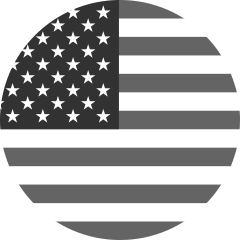Using Real-Time Stroke Rate in the Pool
Delivering a couple of new features you’ve been asking for - now see your real-time stroke rate when swimming freestyle in the pool and effortlessly sync your swims to the FORM app.
At FORM, we are always looking for ways to improve the experience we offer, showing real-time metrics while you swim to enhance the quality of your swim training. We actively consider your feedback when looking at improving our features. From your requests, we noted and prioritized that seeing swim stroke rate in real-time (vs. an average from your previous length or over an interval) was an important metric that we needed to display.

Well, the wait is over. As of today, you can now see your real-time stroke rate when swimming freestyle in the pool using the FORM goggles.
Before we get into the finer details, let’s look at the stroke rate as a swim metric and why we are excited about this.
An Introduction to Stroke Rate
Stroke Rate (SR) is the tempo of your stroke in strokes per minute. Given a consistent distance per stroke, the higher the stroke rate, the faster the swim. You can use swim stroke rate to train for specific events in conjunction with Heart Rate and Distance Per Stroke (DPS) to find optimal ranges. For open water, for example, while swimming in a group, a higher stroke rate is generally advisable because of the number of people around you. Too low of a rate will make it harder to adjust to pace changes in a pack. To train for this, an athlete might use the SR metric in their FORM goggles swim screen to target a stroke rate over 60 for longer sets while training for a half Ironman swim. Stroke rate also involves both timing and frequency.
Stroke timing influences your stroke rate. The generation of a stroke is not a single arm, then another arm, but instead the connection of the entire body. The stroke rate at which you swim is related to the timing between your arms, legs, arms to the legs, breathing, body rotation, etc. Often swim stroke rate is thought of as purely how many arm strokes you take in a specific period of time. In reality, to swim at a higher rate, you must do more than just move your arms at a faster rate; you need to engage your core, hips, legs, and body to achieve the higher rating.

How using stroke rate in real-time is beneficial to swimmers
With the launch of our real-time stroke rate metric for pool swimming, swimmers can now identify optimal stroke rates to meet specific paces, heart rate zones, and distance per stroke measurements.
Our real-time stroke rate metric is updated every 1.5 seconds. This is exciting because knowing your stroke rate as you swim is like knowing your cadence when you run or bike; it is essentially your cadence in the pool.
Learning how your stroke rate relates to different speeds is a great way to find your sweet spot, or optimal pace, for a given distance. For example, this could help a swimmer start at too high of a stroke rate in their intervals or races by assisting them in understanding how to pace based on their perceived effort and corresponding swim stroke rate.
FORM pro triathlete and former NCAA swimmer Lauren Brandon shares her thoughts on stroke rate:
“I haven’t done much work with stroke rate since college when we would wear a device that would beep in your ear every time you were supposed to start a new stroke. It helped to ensure you were keeping your stroke rate up especially as you were getting tired throughout a set. Now with the new real-time stroke rate feature on my FORM goggles, I can start to incorporate stroke rate back into my training and make sure that I have optimal stroke rate for racing.”

“I definitely have a long stroke and a low stroke rate, but I know that when I race, especially in choppy water conditions, it’s important for me to increase my tempo and have a higher stroke rate. My coach and I will continue to add swim sets into my training so that I can work specifically on getting in a higher stroke rate so that I am prepared for my open water races.”
By seeing your stroke rate in real-time, you can get a sense if you are too high or too low based on the pace you are being asked to train or race at.
Since this metric is available in the pool, open water, and for swim spa swimming, you can get an understanding of how your stroke rate varies between different swimming environments, particularly your pool and open water swimming. Pool swimming is much different as you get relief from the walls, so this feature may help you understand how to train at a higher stroke rate in the pool to compensate for the lack of walls in open water as it will be harder to hold a higher rate without walls in open water.
Bonus: Syncing your swims is now effortless!
In this software release, we’re also excited to share that we’ve developed a new feature that will sync your swims automatically between your FORM goggles and app.
In addition, you will also never run out of battery on your FORM goggles during a swim again as we’re able to send you low battery notifications and in-app messages to give you a heads-up before you get to the pool and realize when it’s too late.
Here’s how it works. Your goggles must be within range of your smartphone, with your FORM app running in the background.
But don't worry, if you forget and exit the FORM app, we will remind you in-app, with the message below:

That’s all for this update! Download it now to take advantage of these great new features.
We’re always actively looking to make updates and improvements to our user experience, so please reach out to us if you have any feedback or ideas.










